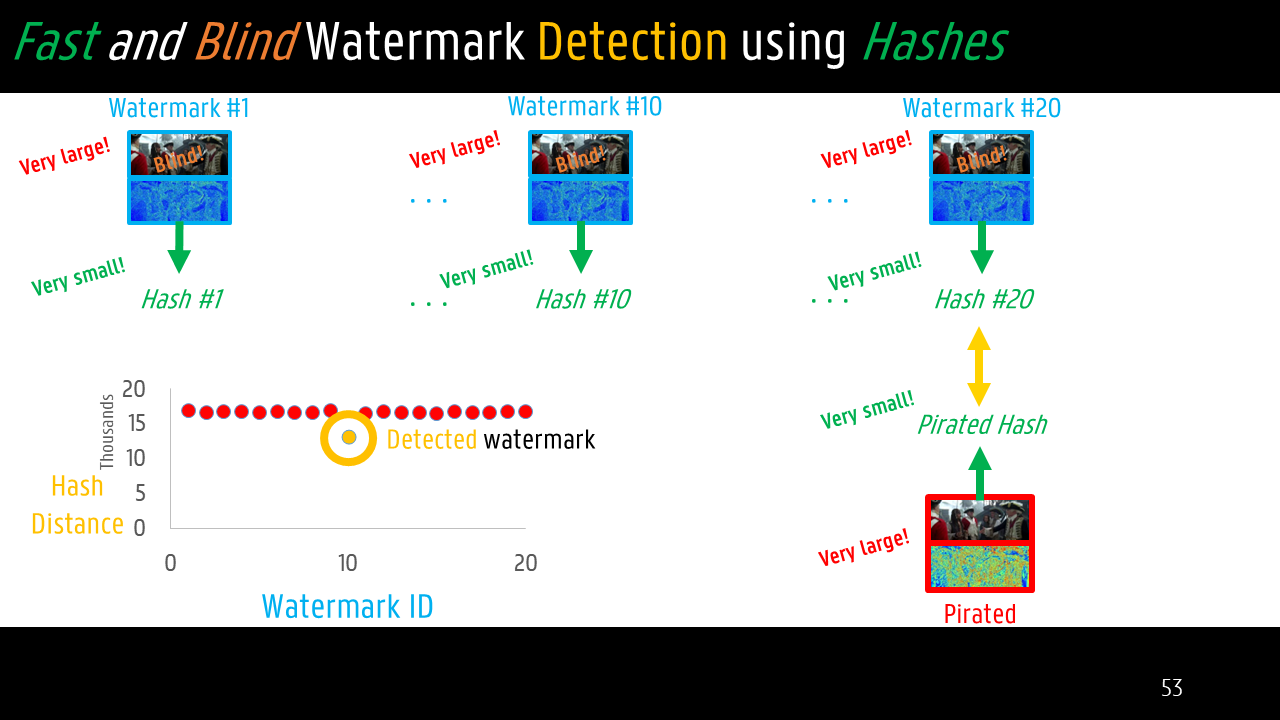We are happy to announce that our paper titled “Fast and Blind Detection of Rate-Distortion-Preserving Video Watermarks” was accepted at the Int. Workshop on Digital Forensics (WSDF) 2022, held in conjunction with the Int. Conference on Availability, Reliability and Security (ARES) 2022. This work was made in collaboration with Prof. Fouad Khelifi of Northumbria University, Newcastle, United Kingdom.
The work was presented on 24 August 2022. A recorded version of the 15-minute presentation can be found below, or by clicking here.
The paper is about forensic watermarking, which enables the tracing of digital pirates that leak copyright-protected multimedia.
To prevent a negative impact on the video quality or bit rate, our previous rate-distortion-preserving work represents a watermark as compression artifacts. However, this method has two main disadvantages; the detection has a high complexity and it is non-blind. Although our previous method based on perceptual hashing speeds up the detection of a fallback watermarking system, it decreases its robustness.
Therefore, this paper proposes a novel fast detection method that has less impact on the robustness than our previous related work. More specifically, our method optimized NS-DCT-DST hashes for rate-distortion-preserving watermarking, which are more robust to content-preserving attacks. Moreover, a blind version is proposed which does not require the original video for hash extraction.
 Instead of comparing the raw videos pixel by pixel, we calculate small hashes from the videos that can be compared much quicker and in a blind way.
Instead of comparing the raw videos pixel by pixel, we calculate small hashes from the videos that can be compared much quicker and in a blind way.
As such, the detection is experimentally measured to be up to 5700 times faster, at the cost of a modest decrease in robustness. In fact, the proposed method shows good robustness to content-preserving recompression attacks when using hashes that are as small as 432 bytes. This is much smaller than related work at comparable performance.
 The proposed method experimentally demonstrated to be between 1400 and 5700 faster in detecting watermarks from (a) watermarked videos. The robustness of fast detection is reduced in comparison with slow detection, although it can still detect the watermark after applying (b) content-preserving recompression attacks, even when these reduce the video quality.
The proposed method experimentally demonstrated to be between 1400 and 5700 faster in detecting watermarks from (a) watermarked videos. The robustness of fast detection is reduced in comparison with slow detection, although it can still detect the watermark after applying (b) content-preserving recompression attacks, even when these reduce the video quality.
In conclusion, this paper enables fast adversary tracing using watermarks that do not impact the video’s compression efficiency.
Paper: Fast and Blind Detection of Rate-Distortion-Preserving Video Watermarks








